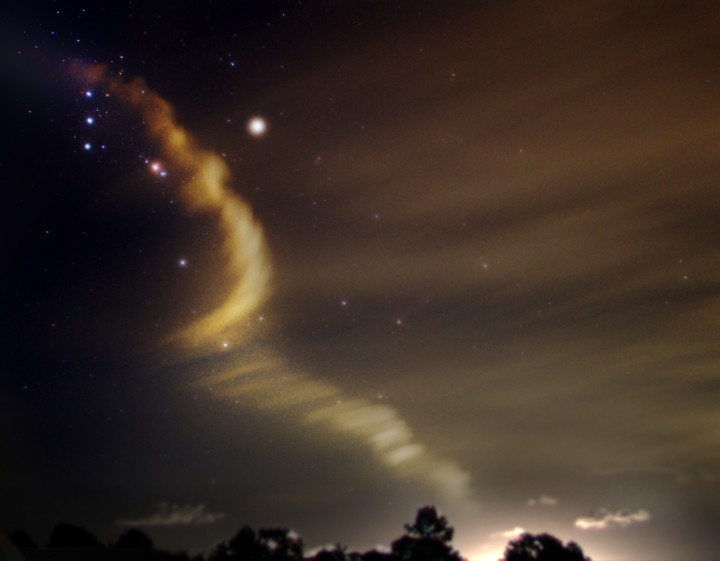Credit & Copyright: Andrew Aurigema
Explanation:
Last Saturday, the
Space
Shuttle Discovery lit up the night
as it climbed into orbit
above planet Earth.
From Oak Hill, Florida, USA - about 30 miles north
of the Kennedy Space Center - design engineer
Andrew Arigema tracked the shuttle and recorded a four minute
time exposure of the exhaust plume
along Discovery's path against the background of the starry sky.
At the upper left, the end of the drifting plume is
punctuated by
Alnitak, Alnilam, and Mintaka in a vertical line, the belt
stars of Orion.
To the right of the belt stars, the pinkish jewel
in Orion's sword is not a star at all, but the great
Orion Nebula.
Still farther to the right, at the foot of the hunter, lies Rigel,
the brightest star in view.
Rigel is
a hot supergiant star some 700 light-years in the distance.
1999 2000 2001 2002 2003 2004 2005 2006 2007 2008 2009 2010 2011 2012 2013 2014 2015 2016 2017 2018 2019 2020 2021 2022 2023 2024 2025 |
Январь Февраль Март Апрель Май Июнь Июль Август Сентябрь Октябрь Ноябрь Декабрь |
NASA Web Site Statements, Warnings, and Disclaimers
NASA Official: Jay Norris. Specific rights apply.
A service of: LHEA at NASA / GSFC
& Michigan Tech. U.
|
Публикации с ключевыми словами:
space shuttle - Орион - Дискавери
Публикации со словами: space shuttle - Орион - Дискавери | |
См. также:
Все публикации на ту же тему >> | |
